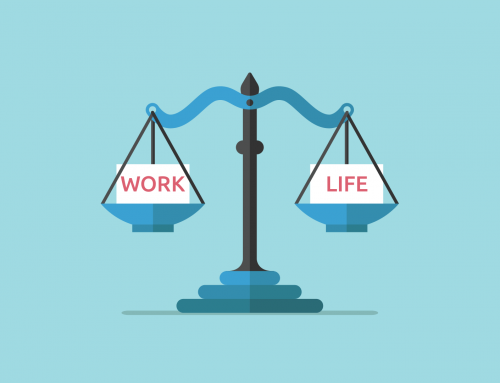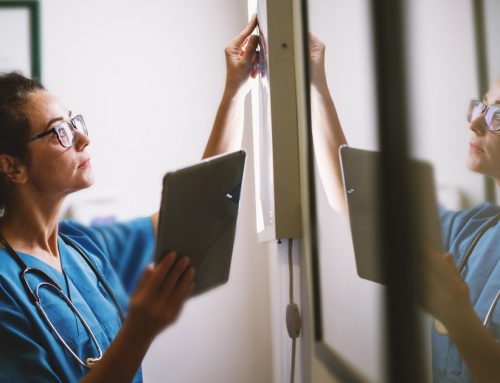Project Description

Social Care and the Digital Age: A Changing Landscape
Is social care stuck in the past? We’ve all had that moment. Frantically searching for that one document that you need for a resident, but it’s stuffed away in a box that’s filled to the brim with other important documents, that hasn’t been organised since it was hot and sunny in November. Across the health & social care sector, this problem we all face has plagued care home managers, employees and other health professionals alike for decades.
Outdated IT systems often fail the social care sector quite seriously, and puts residents at risk as important information is lost in translation. As shown by the example above, just by simply updating old IT data systems can be transformative to the social care sector.Integrating technology with healthcare has become more common in the last decade, perhaps reflective of society becoming more health conscious. However, you don’t have to start downloading the latest healthcare app or ditch the local GP surgery for the newest digital doctor service to take advantage of technology. There are simple, but effective steps you can take to integrate technology into your care home.
Care home residents who need urgent appointments could be scheduled in with a quick email or through a mobile app, rather than staff having to wait for hours on the phone. Changes in prescriptions can be easily updated on a resident’s profile, which nurses could potentially check before medication rounds. Theoretically speaking, this would lead to fewer medication errors – as everything is updated seamlessly. Instant communication between GPs, social workers and care homes means less admin work for managers and permanent staff. This can help to protect residents against delays in medication prescriptions or GP appointments. Less admin work means more time is put into providing residents with the best care possible. Better quality of life and more lives being saved. Let’s have a deeper look into a few technologies that could transform what social care is – and your care home – today.
Smartphones
The mini computers we all use are great for entertainment and connecting with others, but they are also incredibly efficient in something else – collecting data.Sleep quality, daily steps, food intake and even tracking your mood are all made possible through downloaded mobile apps or integrated software on your smartphone. This technology could potentially be used across the social care sector as a way of understanding patients better and noticing shortfalls quicker.
Let’s put this idea into an example: A 65 year old resident diagnosed with Alzheimer’s has recently been having trouble sleeping. With a smartphone, their sleep quality can be passively monitored and the data collected to the care home, who would then get a notification to intervene or schedule a GP appointment for the resident. This would mean it would be easier to keep track of when residents need attention and could potentially take the pressure off staff members. On a larger scale, the use of smartphones and other portable smart devices in care homes could potentially lead to higher quality research from quality data being curated.
Wearables and digital healthcare
‘Wearables’ are devices that are worn and often used to track data. Smart watches, pedometers and fitness-tracking bands are all examples. Medical patches and other wearable technology can be used to monitor blood sugar levels through Continuous Glucose Monitoring. This data collected over time can be used to highlight any potentially life-threatening fluctuations to care staff. This means the potential for serious or life-threatening conditions such as Ketoacidosis or Hyperglycemia are less likely to fully develop before medical intervention. Using these existing technologies could potentially revolutionise the way residents and staff work together to maintain care. If these existing wearable technologies were used as a medical device in the social care sector, we could see care for long-term conditions such as diabetes and high blood pressure revolutionised on a national scale.
Automated long-term medication
Anyone who works in the social care sector knows how difficult it can be to administer medication to residents with varying and complex needs.Many nurses report that medication rounds often don’t have enough staff, meaning nurses are forced to rush around to meet medication schedules. High-pressure situations such as these during medication rounds can lead to serious mistakes.Medication mistakes can be lethal and puts nurses at risk of losing their NMC pin. There have been studies on the potential of a ‘long-term drug delivery system’ from a team of researchers from MIT. This drug delivery system is ingested by the patient and stays in the stomach. The device would then deliver doses of medication with a consistent schedule for a period of time, which could be days, weeks or even years!
Being able to reduce the frequency of medication rounds leaves more time for nurses to take their time with residents and provide them with a more person-centred experience. Although we may be a few years away from using these futuristic devices over standard depot injections, however the technology existing being utilised in healthcare settings is an important first step.
Optimising your workforce
Maintaining a roster of permanent staff has been an issue for care homes, and the social sector in general that seems to be growing by the year – in 2018 there was 30.7% staff turnover rate. Consequently, many care homes have no choice but to lean on agencies to support their staff and maintain care quality. Although agencies have been the go-to for care homes with staffing levels that fall short – it hasn’t always been a positive experience.
Extortionate fees have become normal to expect for care homes and agency staff tend to be exploited more often than not. There are ways to combat this vicious cycle, however. Workforce optimisation is often thrown about as a bit of a buzzword but there are real advantages to adopting the strategy. Filling your staffing gaps from a pool of nurses and carers where you can set the rate and communicate directly with them takes out the hassle of an agency.
Level the playing field using a smarter solution to your staffing gaps. This is just a snapshot of how the health and social care sector could benefit from technology. The efficiency that technology brings us in our everyday lives could easily translate into the social care sector and bring about real change. A lot of care schemes have begun to adopt newer IT systems, which is a step in the right direction of updating our approach to health and social care.
However, not everyone is entirely comfortable with using new technology which can lead to stress and anxiety in the workplace. If you find yourself struggling to keep up with the changes, there’s a lot of help out there. Online resources are a great place to start – designed to guide those unfamiliar with computers and computer programs. You’ll find it is worth your time learning and staying on top of these computer skills, especially if it makes your job as a nurse or manager that much easier.
Of course, if you don’t have the time to complete a free IT course online, you can always reach out to friends and family for assistance – or even suggest an employee training day.Everyday we learn more about how technology can positively impact our personal lives – whether it makes it easier to connect with family in far-flung corners of the world or save precious memories. These advantages can’t stop here – we must aim to use technology to positively impact not just us personally, but society as a whole.Let’s take social care into the future.
Want a smart solution to your staffing gaps? Find out more about MedicBank here.












